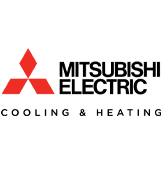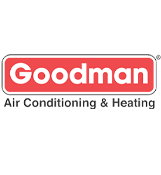Air quality refers to the degree to which air is clean and free of pollutants. Good indoor air quality is an indication that your home is safe and healthy for all occupants. Conversely, low indoor air quality is on top of the list among the causes of sick building syndrome.
High levels of toxins and pollutants lead to symptoms such as dizziness, fatigue, throat irritations, and nausea.
Importance of Monitoring Air Quality
It’s essential to monitor your indoor air quality before you take the right measures to protect yourself. Air quality monitors are beneficial when determining the levels of allergens, toxins, and carbon monoxide in the indoor environment. Once you find out that your indoor air quality is low, you can fix your home’s openings or invest in an air purifier.
Various Devices Used to Measure Air Quality
Air quality is determined by monitoring a variety of indicators.
1. Hygrometer-Thermometer
A hygrometer-thermometer monitors the humidity and temperature. It comes with a display that indicates the relative humidity level. Since it’s user-friendly and inexpensive, it can help you monitor your humidity level and adjust it when needed.
2. Carbon Monoxide Monitor
A Carbon monoxide monitor provides an early warning once it detects the poisonous gas. In the event of a carbon monoxide threat, you need to get fresh air as soon as possible.
3. Dust Detector
A dust monitor uses the optical sensing method to detect the dust particle concentration in your home. The monitor has a photosensor and an infrared light-emitting diode (IR LED), and a photosensor.
The photo sensor detects the amount of dust while the IR LED displays the various levels of dust concentration. It also triggers an alarm when the levels become critical. The monitor will also determine the levels of pollen and pet dander.
How Air Quality Is Monitored
The parameters that you want to monitor determine the air quality sensor that you buy. Whatever is causing discomfort or health risks to the occupants, it’s essential to keep track of the levels to be on the safe side.
1. Relative Humidity
The ideal indoor humidity is between 35% and 50%. High humidity levels lead to condensation on the windows. Low humidity leads to dry air that causes dry skin and hair. It also makes you more vulnerable to respiratory illnesses.
The SMARTRO SC42 Professional Digital Hygrometer Indoor Thermometer monitors RH by:
- Showing a normal reading of 30% to 50% humidity
- Flashing a light when humidity exceeds 50%
- Producing RH charts every 24 hours
- Beeping when RH reaches 70%
Keeping track of RH levels helps you to take the necessary steps when the humidity fluctuates beyond the comfort zone (30%-50%). If relative humidity reaches 70%, the dampness can cause mold growth.
2. Carbon Monoxide
The monitor is a biomimetic sensor whose gel changes color when it absorbs carbon monoxide. It triggers an alarm when the levels of carbon monoxide exceed 10 ppm.
The Combo Smoke and Carbon monoxide Detector monitors CO by:
- Indicating a normal reading of 50 ppm or less
- Flashing a light when CO level of 70 ppm
- Sounding an 85-decibel at 100 ppm
- Providing charts after every 24 hours to monitor spikes in CO levels
A CO monitor provides graphs so that you can detect when the levels are rising and takes steps before they become critical. Carbon monoxide can cause disorientation at 70 ppm. When it reaches 100 ppm, it poses a risk of unconsciousness and even death.
3. Dust And Other Biological Pollutants
Over time, dust can accumulate in your house. Even if you undertake thorough cleaning regularly, your air ducts can harbor dust and circulate it in your home. Determining the number of dust particles in your indoor air helps determine when to schedule a duct cleaning service.
Fine dust particles are dangerous since they can get into the lungs and find their way to your blood. The PM 2.5 dust particle sensor helps you monitor dust levels by:
- Showing a green light when dust is within safe levels 0.1 to 10 (µm)
- Showing a red light when dust levels reach 11 µm
- Sounding an alarm when dust levels exceed 11 µm
- Developing graphs every 24 hours
Keeping tabs on the dust levels will help you to decide when to use an air purifier to maintain good indoor air quality.
How to Improve Indoor Air Quality
There are several things to do to improve the air quality in your home. One is to have air vents in your home. The vents help air to circulate 24/7 in and out of your home. Wall vents are relatively small and usually meshed. This is to prevent large particles of dirt or debris from getting into your home.
Another tip would be to aerate your rooms every day. Keep your windows, and maybe doors, open during the day. This is the best way to ventilate your home since large amounts of air get exchanged. Make a habit of opening all windows when you wake up in the morning. It’s also a good way of regulating the indoor temperature and getting that fresh breeze in.
Avoid keeping damp clothes in the house. Hang them outside so that they can dry up correctly. Even the small tablecloths and face towels, don’t leave them indoors. They will increase humidity in the house and can cause respiratory diseases.
The same can be said for water storage. Don’t leave buckets of water open and indoors. It’ll also increase humidity and drop the temperature in the room, making it cold.
In case you burn something in the kitchen, you can either dump the pan in water so that the smoke stops or take it outside. Either way, you should immediately open your doors and windows so that the smoke leaves the house, and fresh air comes in.
Finally, clean your house daily. Surfaces tend to attract dust, which can be a health risk if not wiped off. If food goes bad, throw it out, don’t just cover it. Also, keep your trash out.
Invest in Air Quality Monitors
Pollutants can build up in isolated parts of your home and become a health risk to your family. If you live next to an industrial plant or busy road, these pollutants can easily find their way into your house. The best way to stay safe is to invest in air quality monitors. It would be best if you have a technician assist with the situation.
At Polar Air & Heating, Inc., we provide whole-house ventilation systems to help keep your indoor air clean. We can also provide air quality monitors to help you stay aware of the air situation. Our award-winning services are available to residents of Las Vegas with a satisfaction guarantee. Other services we offer are heating and cooling. We also provide 24/7 emergency services to improve comfort living in your home. Would you like to improve your indoor air quality? Contact us today at Polar Air & Heating, Inc., and we’ll give you a variety of solutions.




















